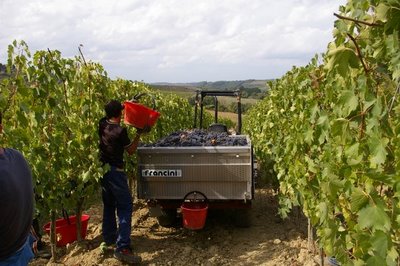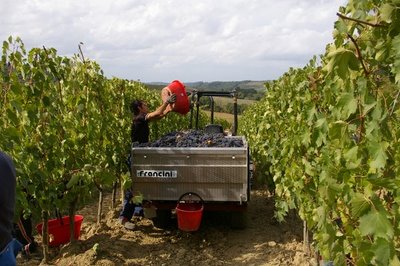A sense of place


How is it, that bunches of grapes, picked from a vine, then crushed, fermented and aged for a year can convey a sense of place?
They can, in the sense that a good, experienced taster can often spot (and explain) the differences in wines made from the same variety but in different places.
In part, though, that difference has to be learned. It is because of our context and experience that we are able to ascribe a geographical origin to a particular wine. There is often a cultural resonance between the wine and the locality, which can only be understood by prior exposure.
I really like - on an emotional level - the idea of the vine's roots extracting something from the soil that then imparts particular characters to the wine. The notion is that the wine contains the essence of the soil in which the vineyard is rooted. That's a literal sense of place.
But I'm not sure that I can tally this idea with what I know about root uptake and plant physiology. It doesn't mean that there isn't such a connection - rather, it implies that the link may be a more complex one than literal transduction of the soil into the glass.
Labels: terroir


5 Comments:
I remember reading that a significant portion of what one might considered terroir comes from the physical structure of the soil and the climate. The former changes slowly but the latter can vary quite a bit. Take for example Europe's little ice age about 400 years ago. If how well grapes grow and express themselves as wine is strongly dependent on climate this implies the best grapes for a plot of ground change over time. If the idea is correct a great terroir is not just the expression a place but of a particular time. While I like this romantic notion, it has the real consequence of challenging the idea that time will allow people to statically match vines to soil forever creating a great terroir.
I definitely believe in sense of place and terroir. In fact I think it's the singular thing that makes the difference between good wine and poor wine. Many mass produced wines that are mechanically harvested and made in massive tanks, loose any sort of terroir and end up tasting uniform. There nothing that bugs me more than a uniformly tasting wine. Cheers!
How much might be down to natural yeasts?
What about the effects of air?
Have people tried taking grapes from a terroiry area (eg. Burgundy) and then making the wine somewhere totally different (eg. Leeds) and seeing what effect that has.
Although it's a complicated subject, I bet that most people just say "it's too hard" and give up on experiments.
Jamie good points about what roots can and cannot take up. However, the commenters here are making good points about regional climate, practices and resident and feral yeasts/fermentative species.
Ultimately, I think certain sites or regions do have commonality of character. As you said: "that difference has to be learned".
Evidently site specific natural yeasts have not been supported (Handbook of Enology 2nd ed. Vol. 1 Ribéreau-Gayon et al. Wiley pp. 45). I have read MANY times that natural yeast fermentation gives a wine its unique character and maybe it does but that character should vary from year to year. That's not how I think of terroir. So I have trouble believing natural yeast is a significant contributor to a wine's uniqueness. I would put my money on the climate and geography as the culprit for terroir rather than special microbes with permanent residence in a vineyard.
Post a Comment
Links to this post:
Create a Link
<< Home